|
The Worlds first Capacitance Based Drum Controller By Andrew Schloss, Bob Boie, Max Mathews University of Victoria's Music Intelligence and Sound Technology Interdisciplinary Center 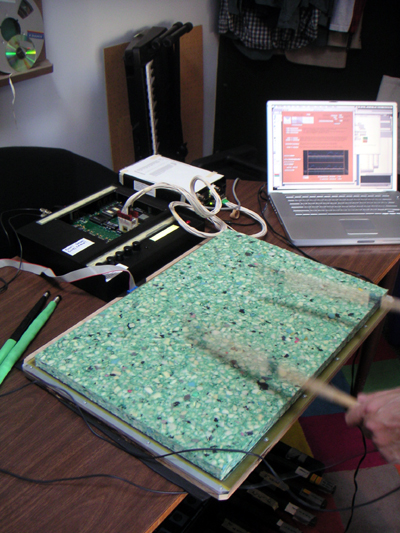
The Radio Drum
The radio drum was first developed at Bell Laboratories in the mid 1980s as a
three-dimensional mouse, which failed as a computer peripheral and instead
became a musical instrument. A kind of “virtual instrument,” it is a descendant of
the theremin, the amazing musical instrument invented in 1917 that generates
sound in response to hand movements in free space within an electromagnetic
field. The radio drum works on a similar principle: the drum itself does not produce
any sound. As a gesture sensor, like the theremin, it detects the performer’s
movements to trigger and control sound; the performer does not have to physically
touch any surface to create a sound. The radio drum consists of two parts:
a rectangular surface (drum) with embedded antennae and two transmitters
embedded in conventional sticks that use different radio frequencies.The drum
surface is covered with a layer of foam to provide a quiet, elastic playing surface
and to avoid striking the circuit board. The radio tracking technique depends
on the electrical capacitance between the radio transmission antenna
in the end of each stick and the array of receiving antennas in the drum. The
drum generates six separate analog signals that represent the x, y, z position of
each stick versus time t. A key attribute of the radio drum is the multidimensional
nature of the gestural signal. This is in contrast with unidimensional controllers
such as keyboards, which have velocity sensitivity only.
Pictures
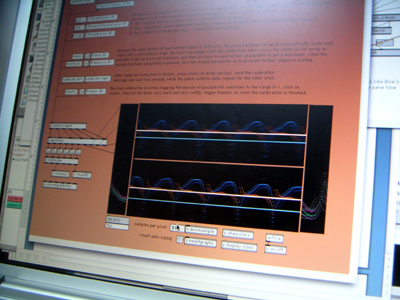

In Concert
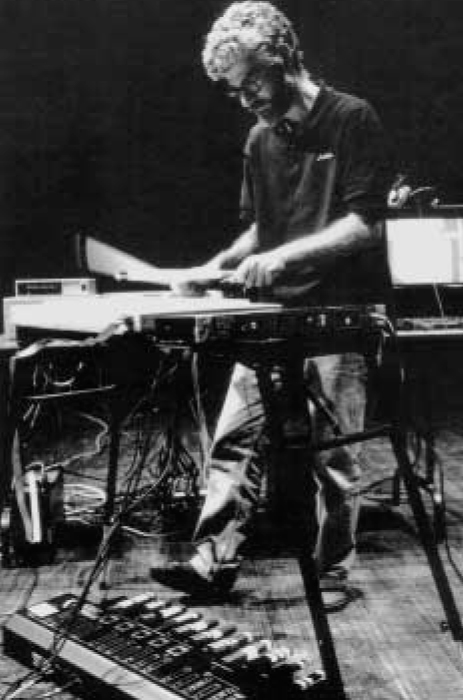
Performed Live at the Banff Centre. 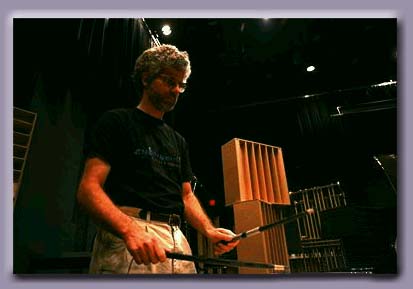
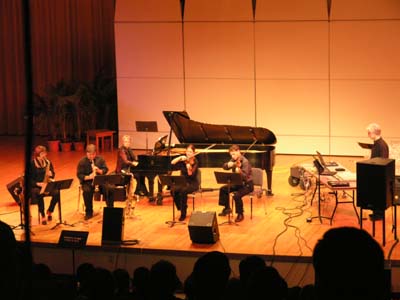
Performed Live at International Computer Music Conference, Miami, Florida, November 2004. Questions Email: aschloss@finearts.uvic.ca |
controllers | MISTIC